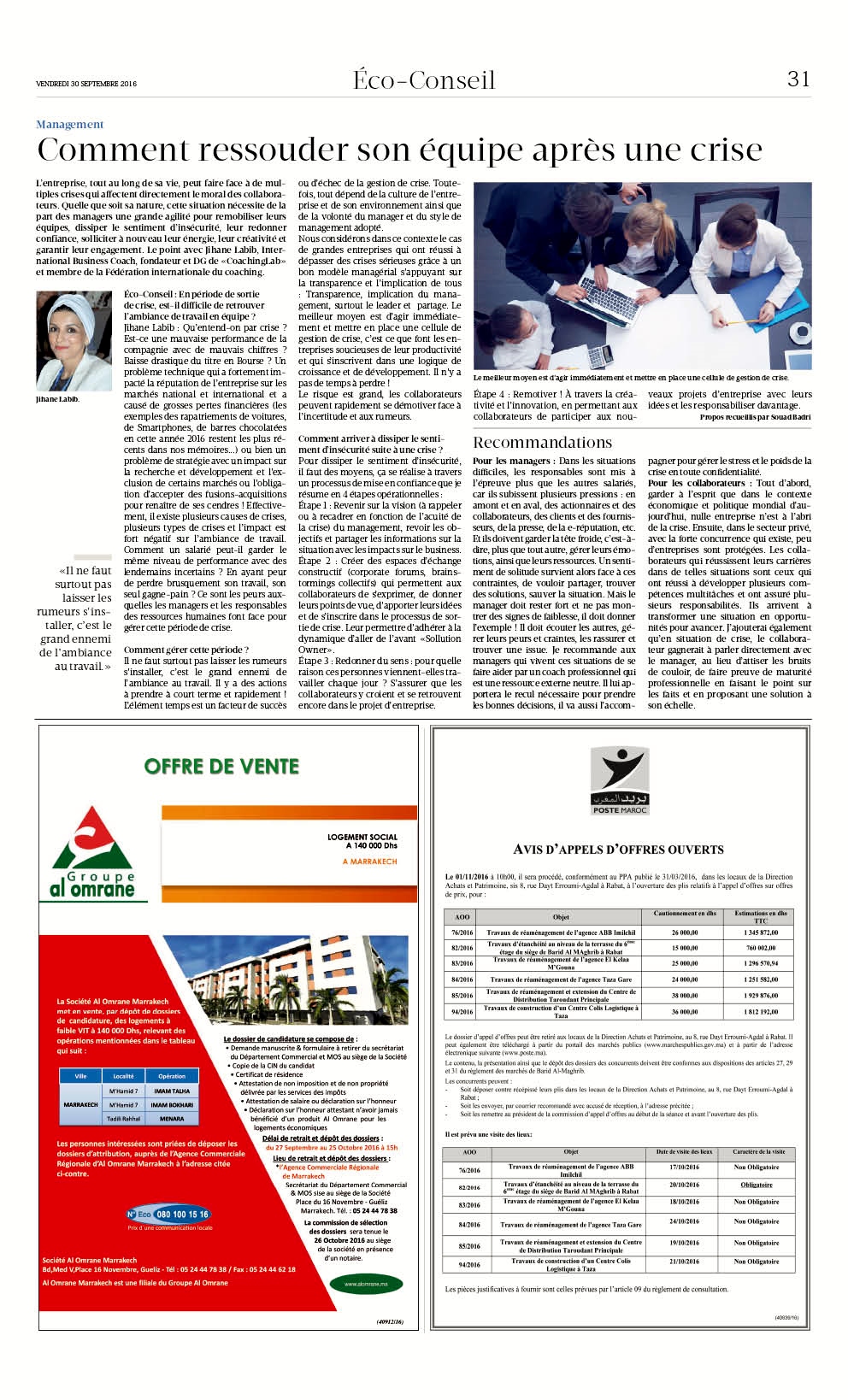– Journal Le Matin
What Happens to Team Spirit After a Crisis?
Crises can take many forms:
- A dramatic drop in company performance or stock value
- A technical failure damaging brand reputation
- Product recalls that shake customer trust
- Strategic mistakes leading to lost markets or forced mergers
Regardless of the cause, the impact on employeemorale is profound. Team cohesion often disintegrates under fear,confusion, and uncertainty. In such times, employees struggle to stayfocused and motivated, especially when their future feels unknown.
So how can managers rebuild trust, regain momentum,and restore team spirit after a crisis?
1. Crisis Response Begins with Transparency
The first enemy of team morale is silence andrumor.
People will fill information gaps with assumptions. That’s why timing iscrucial—respond quickly, or risk long-term disengagement.
Key principles:
- Be transparent about what is already public or circulating in the media.
- Acknowledge emotions: fear, frustration, and confusion.
- Set up open communication spaces, such as listening circles, team huddles, or group coaching sessions.
As a leader, don’t hide behind numbers.Instead, name the unspoken concerns with empathy and courage.
2. Should You Wait or Act Immediately?
Act immediately. The sooner leadership takescontrol of the narrative and offers a path forward, the better.
Establish a crisis response unit within your organization that:
- Addresses emotional fallout
- Facilitates honest dialogue
- Re-engages employees in constructive problem-solving
The longer you wait, the more space you leave for rumors,fear, and withdrawal to set in.
3. A 4-Step Process to Rebuild Trust andMotivation
Here’s a simple, actionable framework to help yourteam move forward:
Step 1: Reaffirm the Vision
Revisit the company’s vision and objectives. Adjustthem if necessary, depending on the severity of the crisis. Make sure everyoneunderstands the current situation and its business impact.
Step 2: Create Dialogue Spaces
Organize brainstorming sessions, team forums, orcorporate cafés. Allow team members to voice their concerns, propose ideas, andfeel like co-owners of the recovery plan.
Step 3: Reignite Purpose
Help employees reconnect with the “why.” Why dothey show up every day? Why is their role meaningful? A crisis can erodepurpose—this step helps rebuild it.
Step 4: Spark Innovation
Invite teams to co-create new projects andinitiatives. Empower them to take responsibility and restore a sense ofcontribution and forward momentum.
4. Practical Advice for Managers and Employees
For Managers:
You face pressure from every direction—shareholders,employees, clients, media, and social channels. And yet, you’re expected toremain calm, strong, and composed.
You must:
- Manage your own emotions
- Reassure and guide your teams
- Avoid projecting fear or confusion
Recommendation:Hire an external executive coach. A neutral, confidential support systemgives you:
- Perspective
- Emotional regulation
- Better decision-making tools
For Employees:
- No company is immune to crisis—especially in today’s volatile economic and geopolitical environment.
- Those who thrive are versatile, multi-skilled, and solution-oriented.
- Avoid gossip. Instead, approach your manager directly, present facts, and suggest realistic solutions.
Maturity and proactive thinking moveorganizations forward.


